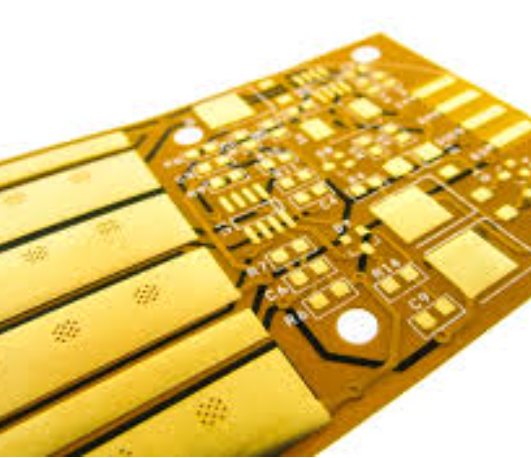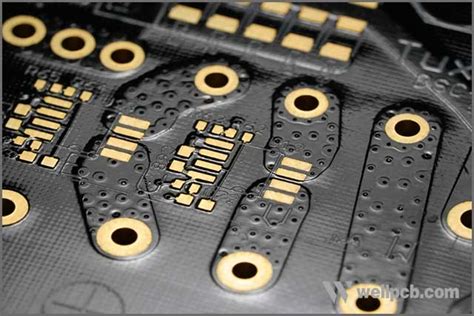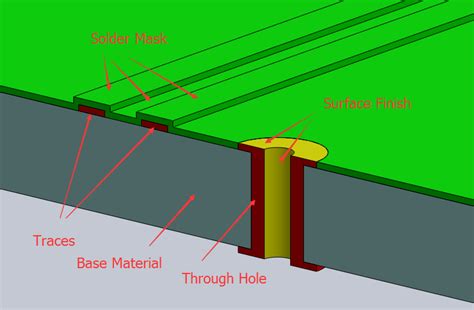Flexible pcb board ribbon cable
Advantages Of Using Flexible PCB Board Ribbon Cables In Modern Electronics
Flexible PCB board ribbon cables have become an integral component in the design and functionality of modern electronics, offering a multitude of advantages that enhance both performance and reliability. As technology continues to evolve, the demand for more compact, efficient, and versatile electronic devices has driven the adoption of these flexible solutions.
The ability to accommodate complex geometries of flexible pcb board ribbon cable
One of the primary benefits of flexible PCB board ribbon cables is their ability to accommodate complex geometries and tight spaces, which is increasingly important as devices become smaller and more intricate. Unlike traditional rigid PCBs, flexible cables can bend, twist, and fold, allowing them to fit into unconventional spaces without compromising the integrity of the electrical connections.
Moreover, the flexibility of these cables contributes to a reduction in the overall weight and size of electronic devices.
This is particularly advantageous in applications such as wearable technology, portable gadgets, and aerospace systems, where minimizing weight and maximizing space are critical considerations. The lightweight nature of flexible PCB board ribbon cables not only enhances the portability of devices but also contributes to energy efficiency, as less material is required for their construction.
In addition to their physical adaptability, flexible PCB board ribbon cables offer superior durability and reliability.
The materials used in their construction are designed to withstand repeated flexing and bending, which reduces the risk of mechanical failure over time. This durability is especially beneficial in applications where devices are subject to constant movement or vibration, such as in automotive or industrial environments. Furthermore, the robust nature of these cables ensures consistent performance even in harsh conditions, thereby extending the lifespan of the electronic devices in which they are used.
Another significant advantage of flexible PCB board ribbon cables is their ability to simplify the assembly process.
By reducing the number of connectors and solder joints required, these cables streamline the manufacturing process, leading to cost savings and increased production efficiency. The reduction in connectors also minimizes potential points of failure, enhancing the overall reliability of the electronic system. This simplification is particularly valuable in high-volume production environments, where time and cost efficiency are paramount.
Additionally, flexible PCB board ribbon cables offer improved signal integrity compared to their rigid counterparts.
The continuous, uninterrupted pathways provided by these cables reduce the risk of signal loss or interference, which is crucial in applications requiring high-speed data transmission or precise signal processing. This enhanced signal integrity ensures that electronic devices operate at optimal performance levels, meeting the stringent demands of modern technology.
Furthermore, the versatility of flexible PCB board ribbon cables allows for greater design freedom, enabling engineers to create innovative solutions that were previously unattainable with rigid PCBs.
This flexibility opens up new possibilities in product design, allowing for the development of more advanced and sophisticated electronic devices. As a result, manufacturers can meet the ever-evolving needs of consumers, who increasingly demand more functionality and performance from their electronic products.
In conclusion, the advantages of using flexible PCB board ribbon cables in modern electronics are manifold. Their ability to accommodate complex designs, reduce weight and size, enhance durability, simplify assembly, improve signal integrity, and offer design flexibility makes them an indispensable component in the development of cutting-edge technology. As the electronics industry continues to push the boundaries of innovation, the role of flexible PCB board ribbon cables will undoubtedly become even more significant, driving advancements in a wide range of applications.

Design Considerations For Flexible PCB Board Ribbon Cables
When designing flexible PCB board ribbon cables, several critical considerations must be taken into account to ensure optimal performance and reliability. These flexible circuits, known for their ability to bend and conform to various shapes, are increasingly used in applications where space constraints and dynamic movement are prevalent. As such, understanding the nuances of their design is essential for engineers and designers aiming to leverage their full potential.
To begin with, material selection plays a pivotal role in the design of flexible PCB board ribbon cables.
The choice of substrate material, typically polyimide or polyester, directly impacts the cable’s flexibility, thermal stability, and overall durability. Polyimide is often preferred for its excellent thermal resistance and mechanical properties, making it suitable for high-temperature applications. On the other hand, polyester offers a cost-effective alternative for less demanding environments. The selection of conductive materials, usually copper, also requires careful consideration. The thickness and type of copper used can affect the cable’s flexibility and electrical performance, necessitating a balance between conductivity and pliability.
Transitioning to the layout design, the arrangement of traces on a flexible PCB board ribbon cable is another crucial aspect.
Designers must ensure that the traces are routed in a manner that minimizes stress during bending and flexing. This often involves using curved traces instead of sharp angles, which can act as stress concentrators and lead to potential failure points. Additionally, maintaining uniform trace widths and spacing helps in reducing impedance variations and ensuring signal integrity. The use of staggered or offset traces can further enhance flexibility by distributing mechanical stress more evenly across the cable.
Moreover, the incorporation of strain relief features is essential in the design of flexible PCB board ribbon cables.
These features, such as fillets or teardrop-shaped pads, help in mitigating stress concentrations at critical junctions, particularly where the cable interfaces with connectors or other rigid components. By providing a gradual transition between flexible and rigid sections, strain relief features can significantly enhance the longevity and reliability of the cable.
In addition to mechanical considerations, thermal management is another important factor in the design of flexible PCB board ribbon cables.
The thin and lightweight nature of these cables can make them susceptible to overheating, especially in high-power applications. Therefore, designers must account for adequate heat dissipation, which may involve the use of thermal vias, heat sinks, or other cooling mechanisms. Proper thermal management not only ensures the cable’s performance but also prevents potential damage to surrounding components.
Furthermore, environmental factors should not be overlooked when designing flexible PCB board ribbon cables.
These cables are often exposed to various environmental conditions, such as humidity, temperature fluctuations, and chemical exposure. Selecting materials with appropriate protective coatings or laminates can help in safeguarding the cable against such adverse conditions. Additionally, considering the cable’s operating environment during the design phase can aid in anticipating potential challenges and implementing suitable protective measures.
In conclusion, the design of flexible PCB board ribbon cables requires a comprehensive approach that addresses material selection, layout design, strain relief, thermal management, and environmental protection. By carefully considering these factors, designers can create flexible circuits that not only meet the specific requirements of their applications but also deliver reliable performance over their intended lifespan. As technology continues to advance, the demand for flexible PCB board ribbon cables is likely to grow, making it increasingly important for designers to stay informed about best practices and emerging trends in this dynamic field.

Applications Of Flexible PCB Board Ribbon Cables In Wearable Technology
Flexible PCB board ribbon cables have become a cornerstone in the development and advancement of wearable technology, offering a myriad of applications that enhance both functionality and user experience. As the demand for more compact, efficient, and versatile electronic devices continues to grow, these flexible cables provide an ideal solution due to their unique properties and adaptability.
One of the primary applications of flexible PCB board ribbon cables in wearable technology is in the realm of fitness trackers and smartwatches.
These devices require components that can withstand constant movement and bending without compromising performance. Flexible PCB board ribbon cables are designed to endure such conditions, providing reliable connectivity between various components within the device. Their ability to conform to the contours of the human body makes them particularly suitable for wearables that need to be both comfortable and unobtrusive.
Moreover, the integration of flexible PCB board ribbon cables in medical wearables has revolutionized patient monitoring and healthcare delivery.
Devices such as heart rate monitors, glucose sensors, and other diagnostic tools benefit from the flexibility and durability of these cables. They allow for continuous monitoring of vital signs without restricting the patient’s movement, thereby improving the quality of data collected and enhancing patient comfort. This seamless integration into medical wearables underscores the critical role that flexible PCB board ribbon cables play in advancing telemedicine and remote health monitoring.
In addition to health and fitness applications, flexible PCB board ribbon cables are also pivotal in the development of smart clothing.
These innovative garments incorporate electronic components that can track various metrics, such as body temperature, movement, and even emotional states. The flexibility of the PCB board ribbon cables ensures that these electronic components can be embedded into the fabric without affecting the garment’s wearability. This integration opens up new possibilities for fashion and technology, allowing for the creation of clothing that is not only stylish but also functional.
Furthermore, the use of flexible PCB board ribbon cables extends to augmented reality (AR) and virtual reality (VR) headsets.
These devices require intricate wiring systems to connect displays, sensors, and other components within a compact form factor. Flexible PCB board ribbon cables provide the necessary connectivity while maintaining the lightweight and ergonomic design essential for user comfort during extended use. As AR and VR technologies continue to evolve, the demand for flexible solutions like these cables will undoubtedly increase.
In conclusion, the applications of flexible PCB board ribbon cables in wearable technology are vast and varied, spanning from fitness and health monitoring to smart clothing and immersive experiences. Their inherent flexibility, durability, and adaptability make them an indispensable component in the design and functionality of modern wearables. As technology continues to advance, the role of flexible PCB board ribbon cables will likely expand, driving innovation and enabling the development of new and exciting wearable devices. Through their integration, these cables not only enhance the performance and reliability of wearables but also contribute to the broader goal of creating technology that seamlessly integrates into our daily lives.

Manufacturing Process Of Flexible PCB Board Ribbon Cables
The manufacturing process of flexible PCB board ribbon cables is a sophisticated and intricate procedure that requires precision and expertise. These cables, known for their adaptability and efficiency, are integral components in a wide range of electronic devices, from smartphones to industrial machinery
Understanding the manufacturing process begins with the selection of appropriate materials, which is crucial for ensuring the flexibility and durability of the final product.
Typically, the base material used is a flexible polymer, such as polyimide, which provides the necessary flexibility and thermal stability. This material is then laminated with a thin layer of copper, which serves as the conductive pathway for electrical signals.
Once the materials are selected, the next step involves the design and layout of the circuit.
This is a critical phase where engineers use computer-aided design (CAD) software to create precise patterns that will be etched onto the copper layer. The design must account for the specific requirements of the application, including the number of layers, the width of the conductive traces, and the overall dimensions of the ribbon cable. After the design is finalized, it is transferred onto the copper-clad laminate using a photolithographic process. This involves coating the laminate with a photosensitive material, exposing it to ultraviolet light through a mask of the design, and then developing it to reveal the pattern.
Following the photolithography, the exposed copper is etched away using a chemical solution, leaving behind the desired circuit pattern.
This etching process must be carefully controlled to ensure that the traces are of uniform width and free from defects. Once the etching is complete, the next step is to apply a protective layer over the circuit. This is typically done using a solder mask, which not only protects the copper traces from oxidation and environmental damage but also helps to prevent short circuits during soldering.
The manufacturing process then moves to the drilling and plating stage.
Holes are drilled into the flexible PCB to accommodate components and connectors. These holes are then plated with copper to ensure electrical connectivity between different layers of the circuit. This step is particularly important for multi-layer flexible PCBs, where inter-layer connections are necessary.
Subsequently, the flexible PCB undergoes a series of tests to verify its electrical performance and mechanical integrity.
These tests include continuity testing to ensure that all connections are intact and insulation resistance testing to confirm that there are no unintended paths for current flow. Any defects identified during testing are addressed before the final assembly stage.
In the final assembly, components are mounted onto the flexible PCB using surface-mount technology (SMT) or through-hole technology, depending on the design requirements.
The assembly process must be conducted with precision to avoid damaging the flexible substrate. Once assembly is complete, the flexible PCB ribbon cables are subjected to a final inspection to ensure they meet all specifications and quality standards.
In conclusion, the manufacturing process of flexible PCB board ribbon cables is a complex sequence of steps that demands meticulous attention to detail and adherence to stringent quality controls. From material selection to final inspection, each phase plays a vital role in producing a reliable and efficient product that meets the diverse needs of modern electronic applications.






